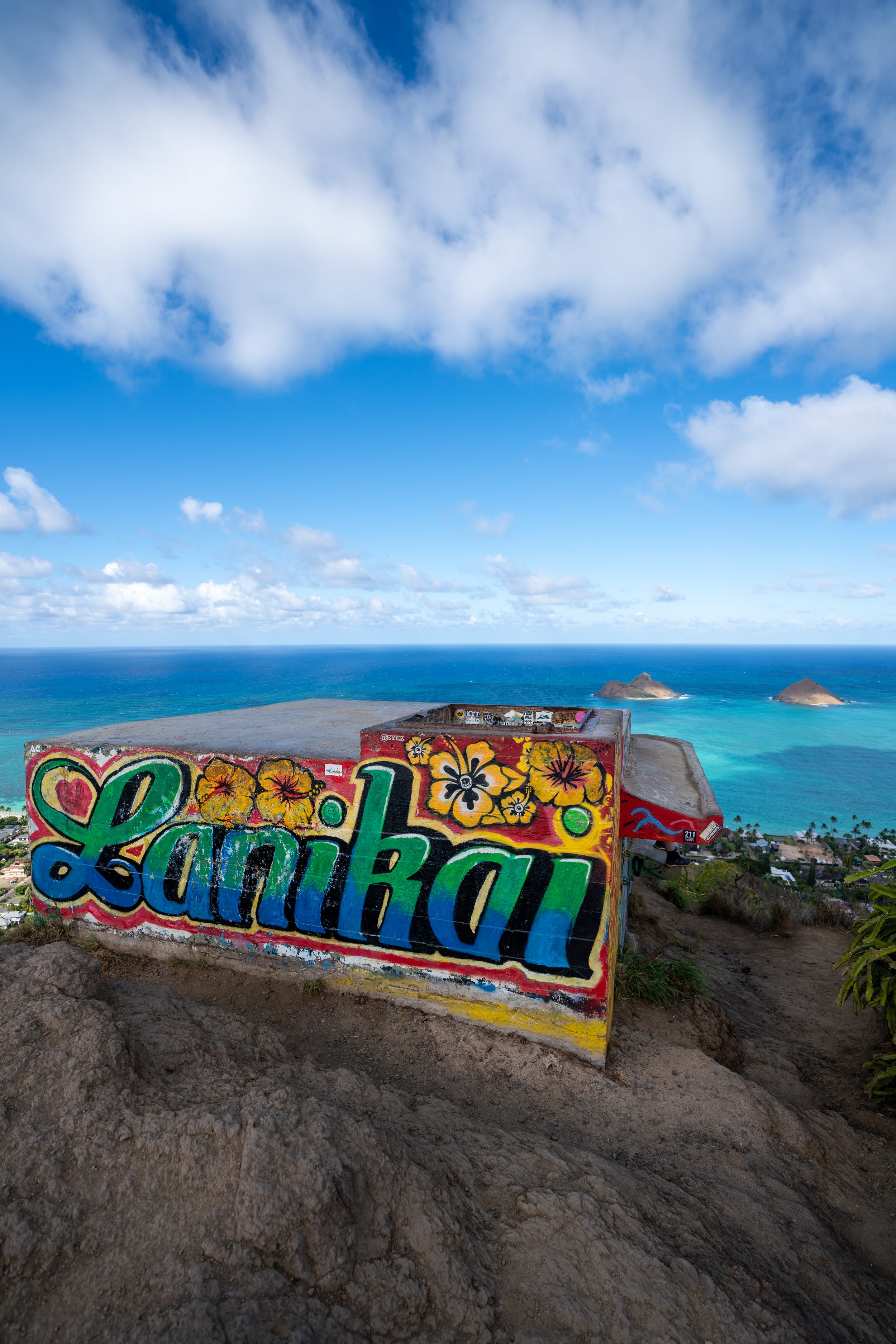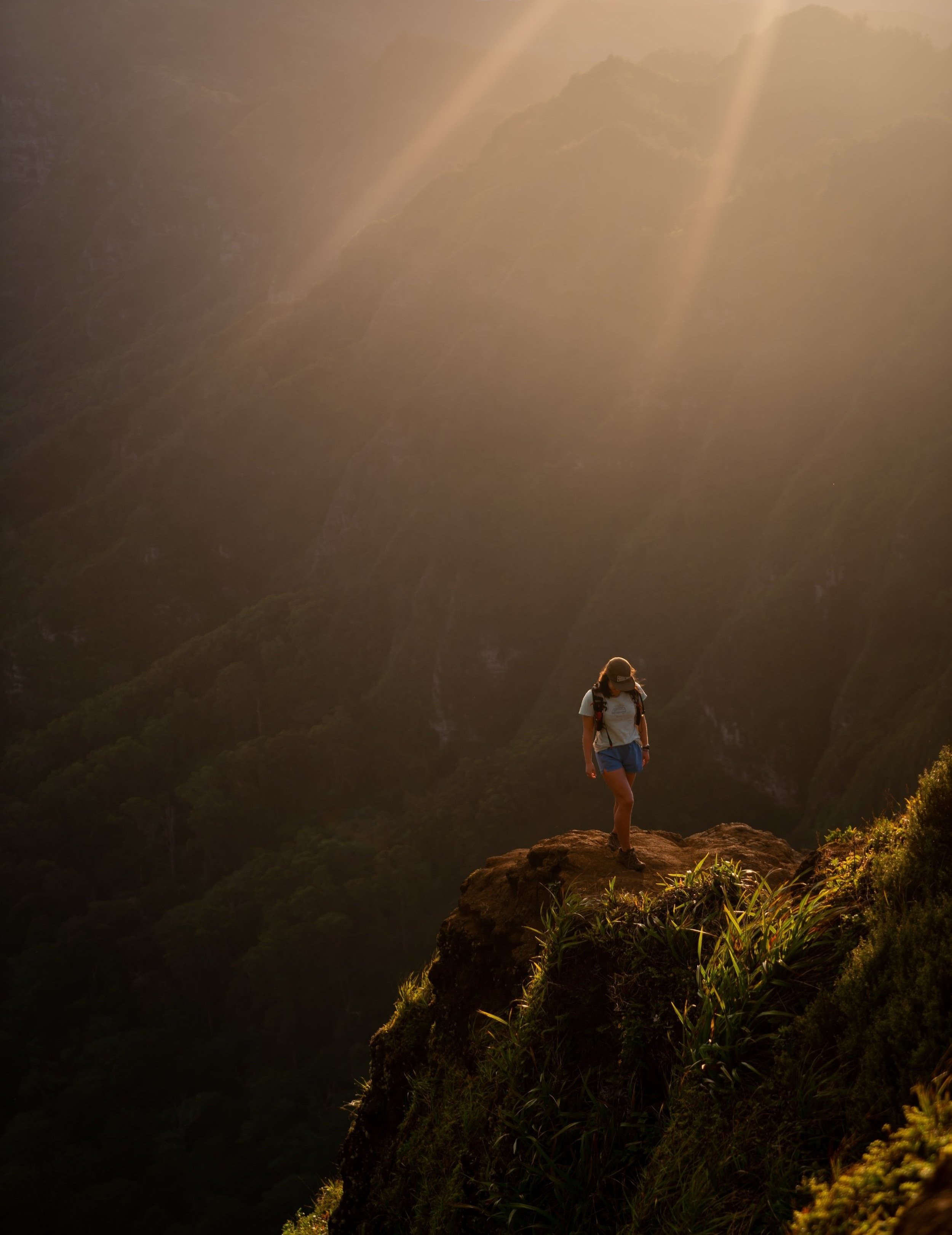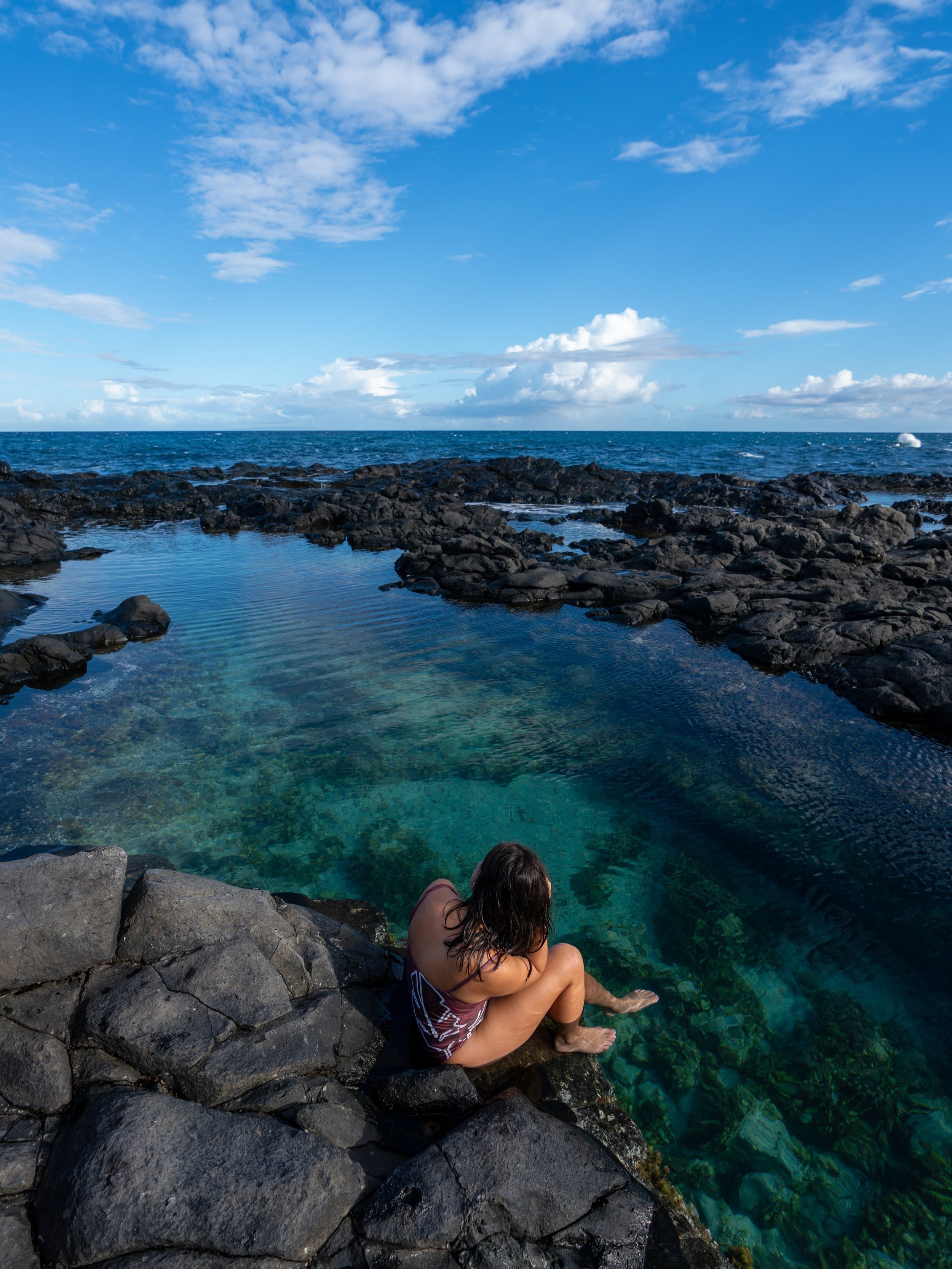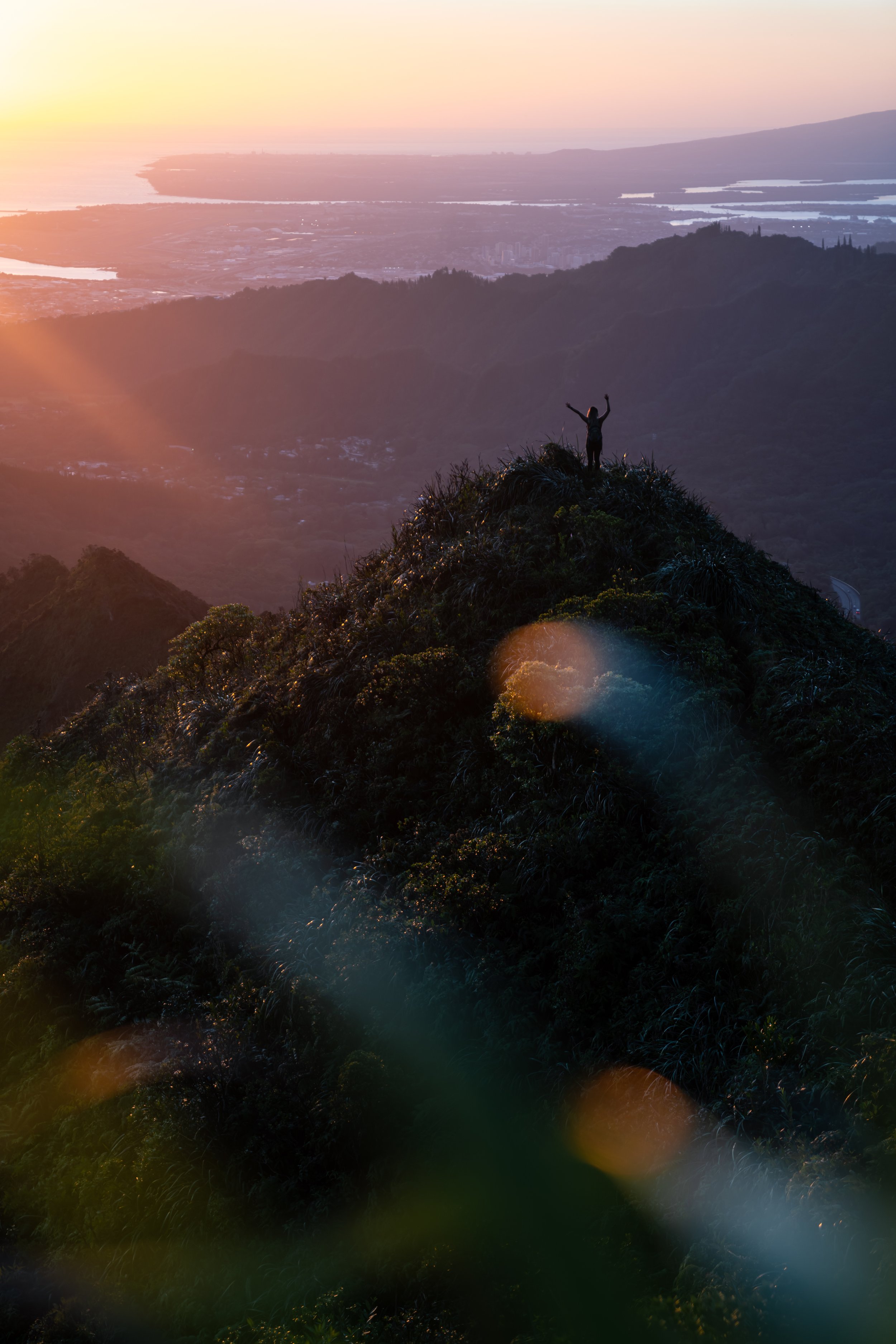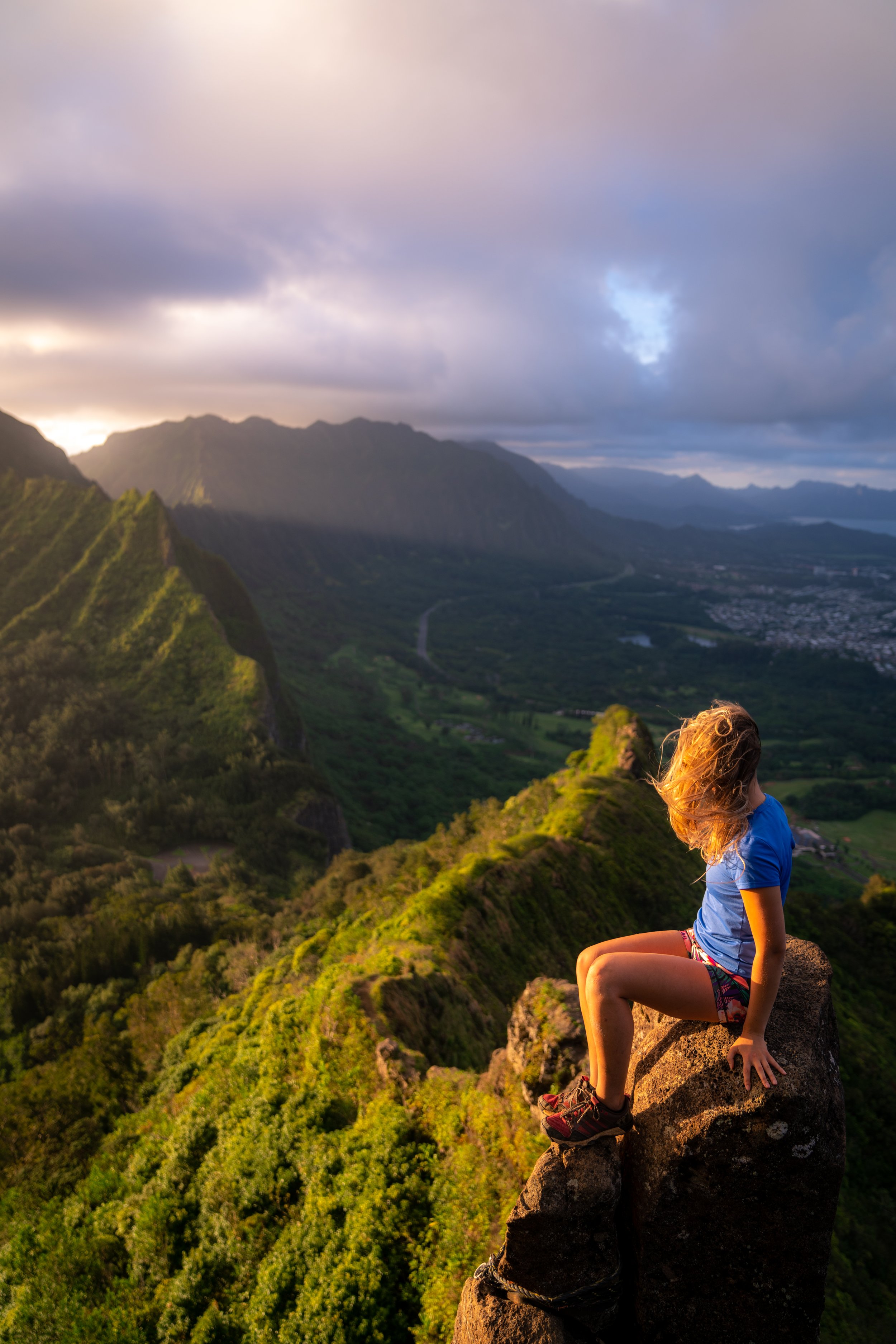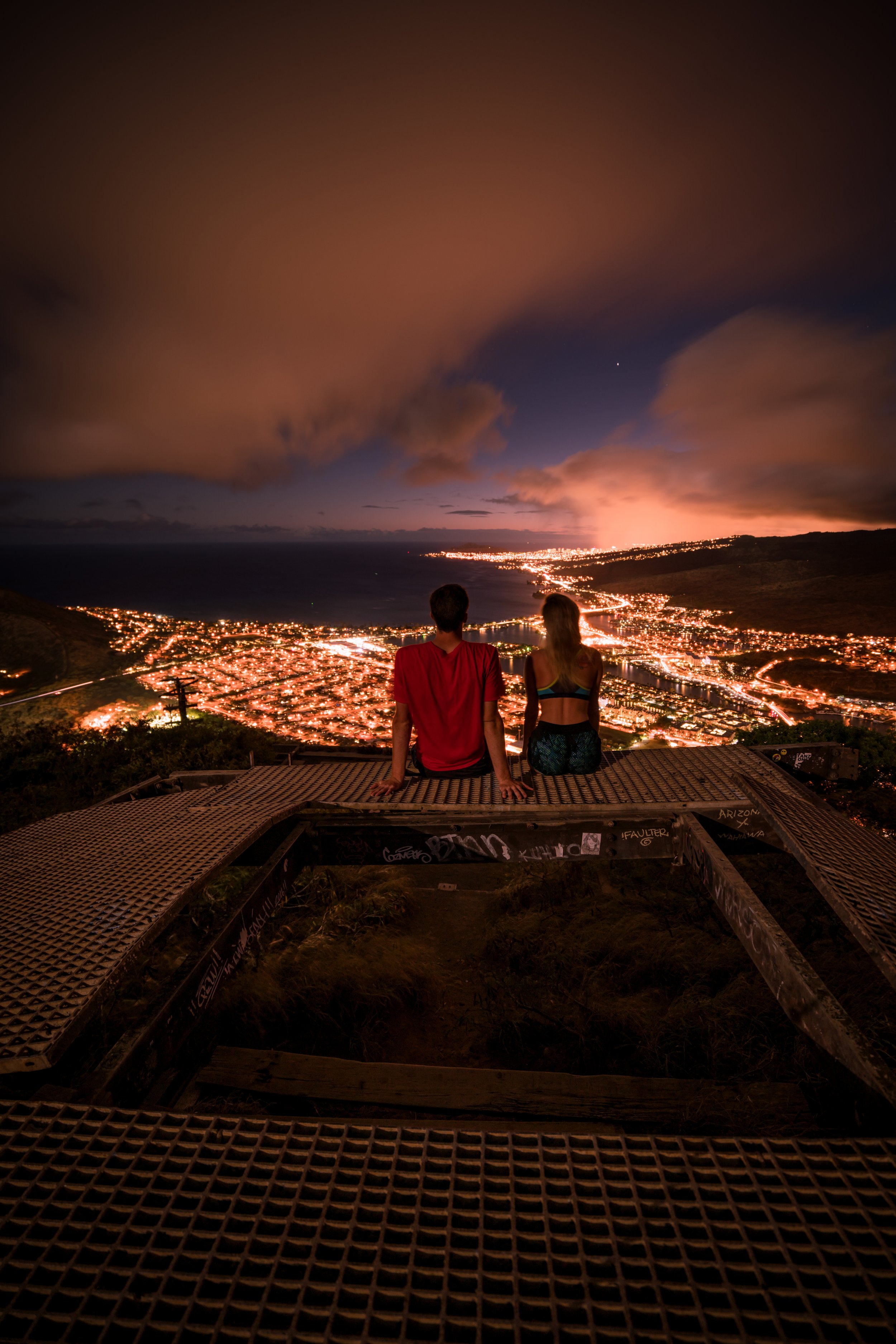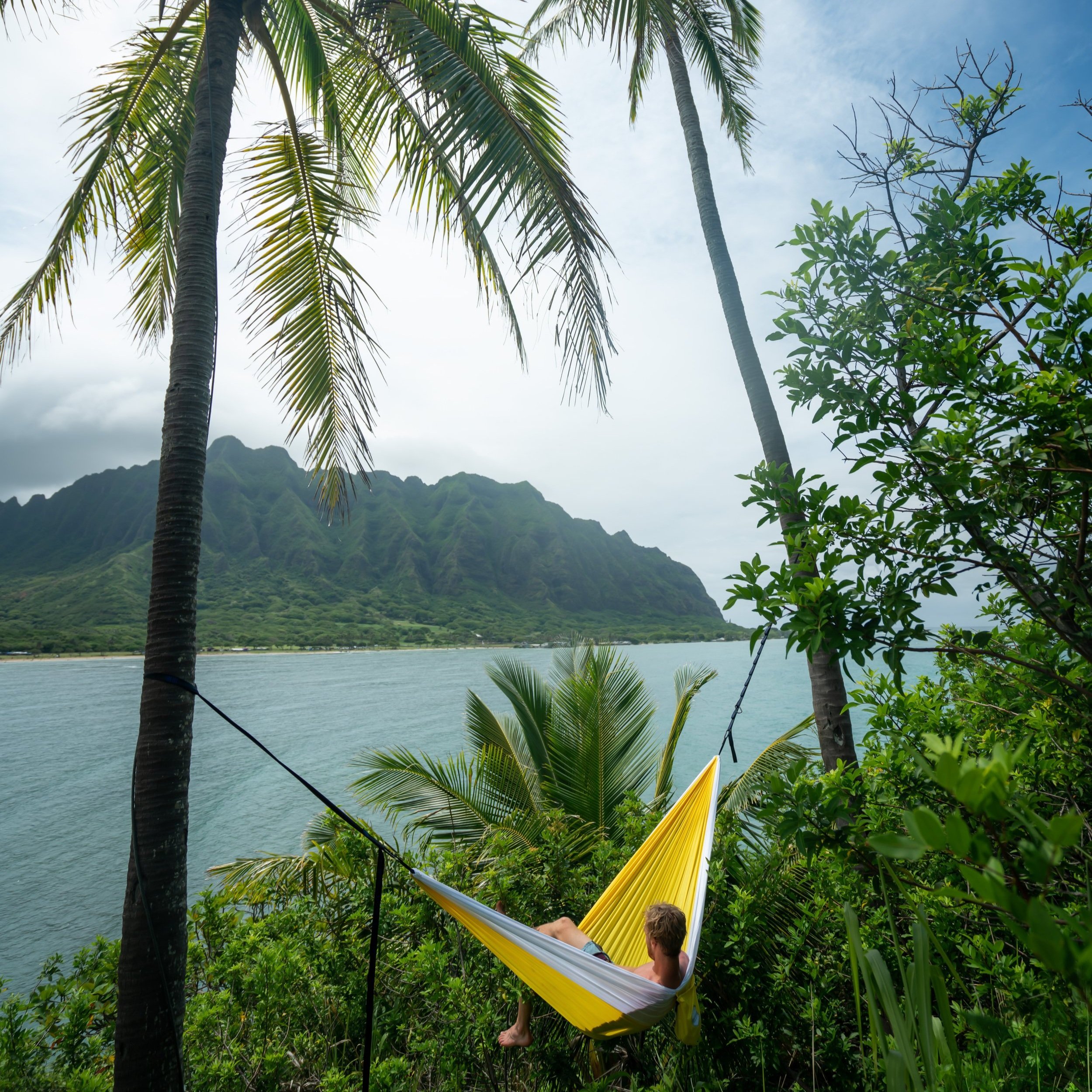Hiking the Kaʻau Crater Trail on Oʻahu, Hawaiʻi
Distance: 4.7 miles / 7.6 km
The Kaʻau Crater Trail in the southern Koʻolau Mountains on Oʻahu is a renowned favorite on the island that attracts both residents and visitors alike!
This is because the full Kaʻau Crater Loop ascends past three different waterfalls, loops around a dormant volcanic crater, and offers summit views that span much of Oʻahu’s east side, which inevitably make the Kaʻau Crater Trail one of Honolulu’s best and most popular day hikes!
For these reasons, I recommend hiking the Kaʻau Crater Trail on a weekday over a weekend, in order to enjoy a much less-crowded experience.
In addition, I think it’s important to note that the hardest part of the Kaʻau Crater hike is the first 2.1 miles (3.4 km) to the summit of Puʻu Palikea (the first peak). I say this to emphasize that it’s not worth turning back upon reaching the summit, as the hike only gets easier by completing the entire loop.
Kaʻau Crater Trailhead Parking
Parking for the Kaʻau Crater Trail is located on Waiʻōmaʻo Road in the back of Pālolo Valley.
If you see a parking spot on the side of the road within 0.5 miles (0.8 km) of the trailhead, take it, as it only gets more difficult to park the closer you get to the trailhead.
Google Maps Directions: Kaʻau Crater Trailhead
Hiking the Kaʻau Crater Trail
The Kaʻau Crater Trail begins at the very end of Waiʻōmaʻo Road on the left-hand side.
Initially, the trail drops down a steep down-climb to the Waiʻōmaʻo Stream, which will parallel the trail for the next 1.8 miles (2.9 km) until the start of Kaʻau Crater.
This spot will almost always be muddy because of a natural spring; however, it’s important to know that the entire Kaʻau Crater Trail can be one of the muddiest hikes on Oʻahu, regardless of whether it has recently rained or not.
Kaʻau Crater Pipe Trail
When you reach pipe, follow it all the way to the first waterfall.
Sometimes people call it the Kaʻau Crater Pipe Trail because it goes on for so long!
These are the first views of the summit that you get from the valley.
Can you spot the Māmaki?
Up to this point, it was one of the few native plants that I noticed.
That being said, if you are curious about trying the native Hawaiian Māmaki tea, I kindly ask that you don’t harvest Māmaki from our native forests but, instead, buy from one of the local reputable vendors, such as those listed below.
First Waterfall
This is the split for the first waterfall, but it isn’t located directly on the trail.
Therefore, to check out the first waterfall, go right or to continue up the Kaʻau Crater Trail, go left.
Above the first waterfall, the next two will come shortly after.
Second Waterfall
Unlike the first falls, the second is right on the main trail.
To continue further, the trail goes up and around the second waterfall on the right side.
Warning
This small section in the next two photos is easily the most dangerous part on the entire trail, and hikers have lost their lives here before.
Therefore, be sure to grab something solid, as you make your way past the top of the second waterfall.
Third Waterfall
The third waterfall is the last waterfall on the Kaʻau Crater Trail, and it’s the only one where you either have the option of climbing up the falls or continuing up the ridge to the left.
Both are fairly steep, but the ridge is generally the safer option.
If you were to slip and fall on the third falls, it’s likely that you would fall to the bottom, as it has happened in the past. However, if you slipped on the side trail, you would likely be caught by the overgrowth well before the bottom of the climb.
I took the side trail because I was hiking alone.
Both options are pretty steep!
At the top of the side trail, go right to continue up the best trail around the crater.
Initially, it will lead down to the stream, where the route up the third waterfall comes up.
Once at the stream, take the trail heading up the ridge on the far side.
From here, it’s one steep climb up to the summit of Puʻu Palikea.
Puʻu Palikea
As mentioned previously, don’t turn back if you’ve made it to Puʻu Palikea.
I say this because turning back around is significantly more difficult than hiking further around to the north side of Kaʻau Crater.
This is because when the trail meets back with the Waiʻōmaʻo Stream from the beginning, you only have 0.4 miles (0.6 km) to hike back out to the trailhead compared to the three waterfalls, with much longer pipe trail immediately following.
Koʻolau Summit Trail (KST)
The short Koʻolau Summit section of Kaʻau Crater moves fairly quick, and as mentioned previously, the ridge back down cuts out some of the most annoying sections through Pālolo Valley.
Read My Separate Post: Koʻolau Summit Trail (KST)
North Puʻu Palikea
After the second power line, start looking for the turn back down the north side of Kaʻau Crater.
It’s not very obvious, but as long as you’re watching where the ridge on your left meets the summit, you shouldn’t miss it.
However, if you happen to hike past the turn, the next major trail down is Waʻahila Ridge from Mt. Olympus, which is the peak visible in the distance in the photos below.
Read My Separate Post: Koʻolau Summit Trail (KST)
This view in the photo below will be the last view of the crater before turning back down the return ridge.
Kaʻau Crater Loop-North Ridge Junction
Turn right to continue back down the north ridge into Pālolo Valley, as the less obvious trail on the left completes the loop around the crater where the side trail and third waterfall initially ascended.
In my opinion, the north ridge is like a highway compared to the slow and tedious pipe trail below.
I say this because it’s less overgrown, there’s less rock hopping, and it’s not too steep of a descent compared to the beginning.
Waiʻōmaʻo Stream
At the bottom of the ridge, the Kaʻau Crater Trail crosses back over the Waiʻōmaʻo Stream, with only 0.4 miles (0.6 km) left to hike to reach the trailhead.
This photo below is looking back at the split for the north ridge on the left versus the pipe trail on the right.
It’s not an obvious split to notice, which is why most hikers ascend up Kaʻau Crater via the pipe trail.
Native Plants on the Kaʻau Crater Trail
There are tons of different native Hawaiian plants to see on the Kaʻau Crater Trail once you reach the higher elevations around the loop.
Some of these include ʻŌhiʻa lehua, Koa, Māmaki, ʻAhakea, Kōpiko, and ʻŌhelo, to name a few.
If you’d like to know more about these and tons of other native Hawaiian plants from across the islands, I encourage you to check out my separate post.
Read My Separate Post: Native Hawaiian Plant Guide



